
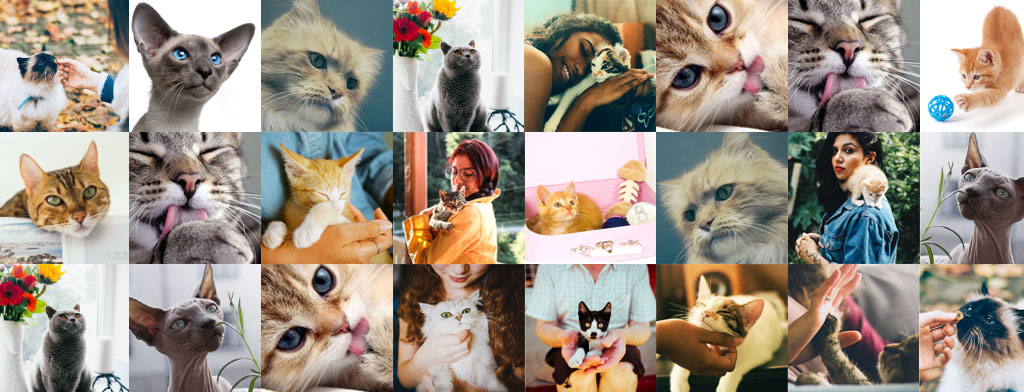
Feline lower urinary tract disease (FLUTD)
Failure to urinate or passing little urine can be a sign of a urethral obstruction and is a veterinary emergency.
Overview
FLUTD refers to a range of disorders that lead to difficulty in urinating. FLUTD is more commonly seen in cats older than 4 years of age and rarely diagnosed in young cats. Cats with chronic kidney disease or diabetes seem to be more predisposed to the condition.
Risk factors for FLUTD:
- Genetics
- Stress
- Environmental changes such as living conditions or litter tray situation
- Multi-cat households
- Overweight cats or lack of exercise
- Nutritional such as dry-only diets
- Old-age
- Breed
- Gender
Signs
Common signs of FLUTD:
- Drinking more
- Urinating more
- Blood in urine
- Straining to urinate
- Urinating outside the litter box
- Pain on urinating
- Excessive licking of genitals
Causes
Common causes of FLUTD:
- Bladder infection (cystitis) including Feline idiopathic cystitis (FIC)
- Bladder crystal or stones or plugs
- Cancer
- Trauma
- Incontinence
Age seems to play a role in the cause of FLUTD in cats with cats greater than 10 years of age often having more straightforward cases than younger cats.
| Top causes of FLUTD in older cats | Top causes of FLUTD in younger cats |
|
Bacterial infection Uroliths Plugs |
FIC Plugs Uroliths |
Cystitis & FIC
Cystitis often occurs on and off resolving without treatment within 3-5 days. It is estimated that over 50% of cats that suffer from FLUTD have cystitis with feline idiopathic cystitis thought to be the most common cause of FLUTD in cats.
Bladder crystals or stones
Bladder crystals and stones are also commonly occurring in approximately 20% of cases. The most common types are struvite or calcium oxalate and can cause blockage of the urethra.
Struvite crystals are often responsible for causing a urethral plug that blocks the cat's urethra and the ability to urinate. It is important to note that struvite crystals can be found in both affected and normal cats.
Urinary tract cancer
Only 1-5% of cats will have urinary tract cancer.
Trauma
Only 1-5% of cats will have problems relating to trauma such as being hit by a car.
Diagnosis
A full workup is required to determine the cause of the urinary system problem. Your veterinarian may run a blood panel, urinalysis, culture, radiographs or ultrasound to determine the cause.
Bringing in a fresh urine sample can be very helpful for your veterinarian.
Tips on how to collect a urine sample at home:
- Always provide a fresh urine sample to avoid contamination and changes
- Consider refrigeration as a last resort if the sample cannot be fresh
- Use a very clean container such as an unused plastic cup to collect the sample
- Clean the litter tray, place non-absorbent litter and lock your cat in a room until it urinates
- Record the time of day the urine was collected
Management
The goal of treatment is to increase water consumption, reduce stress, manage the infection and crystals, and reduce pain.
Management of FLUTD:
- Removal of any stress factors
- Dietary management to control the urine pH, minimize crystal formation, reduce inflammation and increase urine volume
- Veterinary diets to help dissolve the struvite crystals
- Increasing water intake by feeding tinned food or adding water to dry food
- Surgical removal of crystals/stones in severe cases
- Veterinary pain management with meloxicam
- Behavior modification with amitriptyline
Unfortunately, some cats will experience frequent recurrences of FLUTD. Careful, long-term monitoring is required in these cases.
Litter tray management
- Keep the litter tray clean daily
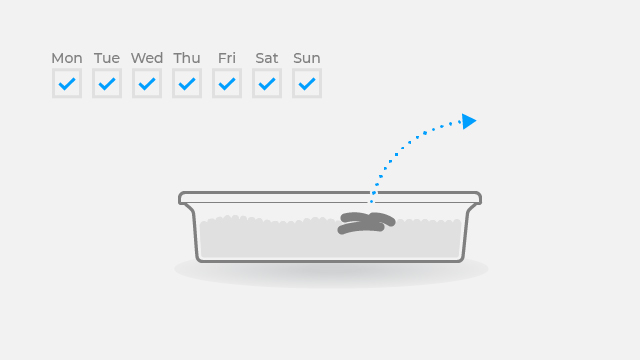
- Clean the litter tray every week with warm soapy water
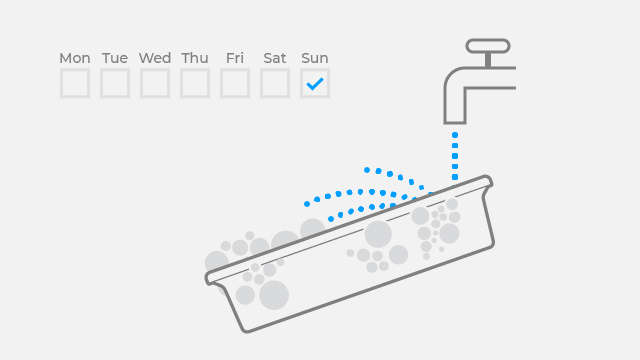
- Keep enough litter trays per household cats e.g. 1 litter tray per cat plus one extra
- Try different litter trays such as open, covered, deep, or shallow
- Adequate litter tray size e.g. 1.5 times the length of the cat
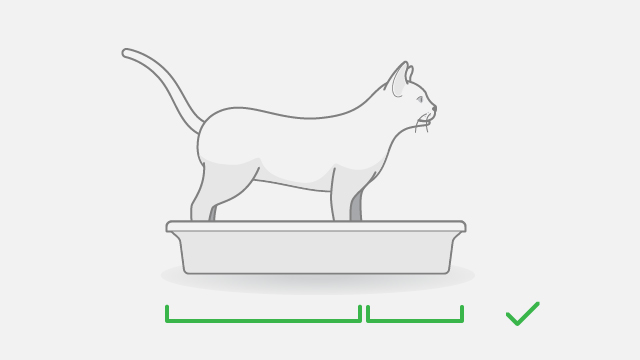
- Keep litter trays in a low traffic area
- Keep litter trays away from food and water bowls
- Identify litter dislikes. A happy cat will dig into the litter for more than 4 seconds
- Desex all cats
- Prevent access or view of outside stray cats
- Use good quality litter such as soft, unscented clumping litter
- Ensure the litter depth is at least 4cm or 2 inches deep
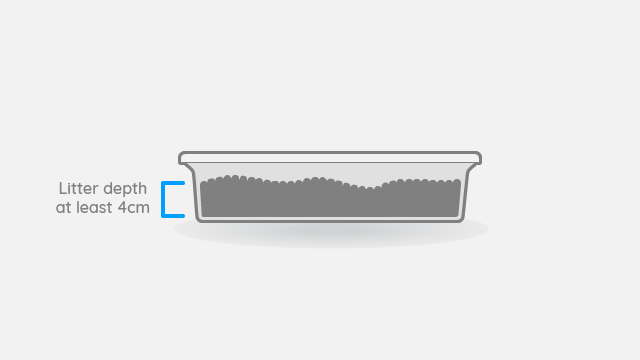
Prevention
Tips to help prevent FLUTD:
- Feed smaller amounts of food more frequently (2-3 meals a day)
- Feed tinned food
- Feeding diets high in Omega 3 fatty acids to help reduce bladder wall inflammation
- Offer water flavored with low-salt tuna or chicken broth
- Change the water bowl to a shallow, wide bowl as cats do not like their whiskers touching the bowl sides or water fountains
- Consider a veterinary prescription diet specific to the type of urinary tract problem
- Provide regular, fresh water at all times in multiple bowls around the home
- Reduce stress by providing scratching poles, elevated resting perches, food contraptions, and feeding in a stress-free environment
References
Kruger JM, Osborne CA, Goyal SM, et al. Clinical evaluation of cats with lower urinary tract disease. J Am Vet Med Assoc 1991; 199: 211-216.
Longstaff L, Gruffydd-Jones TJ, Buffington CT, et al. Owner-reported lower urinary tract signs in a cohort of young cats. Journal of Feline Medicine and Surgery 2017; 19:609-618.
Gerber B, Eichenberger S and Reusch CE. Guarded long-term prognosis in male cats with urethral obstruction. J Feline Med Surg 2008; 10: 16-23.
Cooper ES, Owens TJ, Chew DJ, et al. A protocol for managing urethral obstruction in male cats without urethral catheterization. Journal of the American Veterinary Medical Association 2010; 237: 1261-1266.
Buffington CA, Blaisdell JL, Binns SP, Jr., et al. Decreased urine glycosaminoglycan excretion in cats with interstitial cystitis. J Urol 1996; 155: 1801-1804.
Lavelle JP, Meyers SA, Ruiz WG, et al. Urothelial pathophysiological changes in feline interstitial cystitis: a human model. American Journal of Physiology-Renal Physiology 2000; 278: F540-F553.
Westropp JL, Welk KA and Buffington CA. Small adrenal glands in cats with feline interstitial cystitis. J Urol 2003; 170: 2494-2497.
Markwell PJ, Buffington CA, Chew DJ, et al. Clinical evaluation of commercially available urinary acidification diets in the management of idiopathic cystitis in cats. JAm Vet Med Assoc 1999; 214: 361-365.